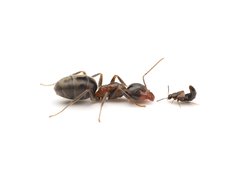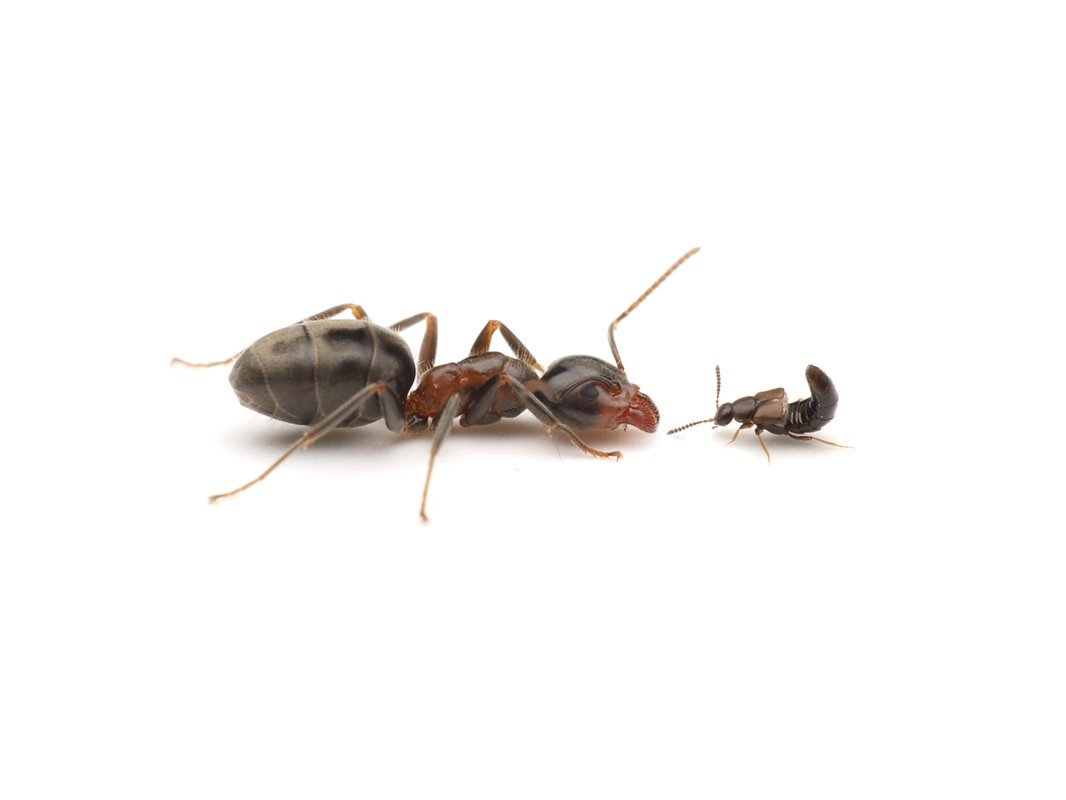As organisms diversified on planet Earth, some branches of the tree of life became exceptionally diverse, others much less so. Still others have disappeared. Why evolution favored certain groups over others is a long-standing question in evolutionary science.
Beetles are the iconic illustration of evolutionary success: around 400,000 species are known, about a quarter of all described life forms, and potentially hundreds of thousands more await discovery. The beauty and diversity of beetles enchanted the young Charles Darwin and fascinated the adolescent Alfred Russell Wallace, the co-discoverers of evolution by natural selection.
But why are there so many beetles? A widely held view is that beetles gained an ecological advantage by developing their elytra, the hardened shield-like structures that protect the flight wings, allowing them to live in many different niches that other insects cannot access. Another hypothesis is that beetles co-evolved with flowering plants. As these plants have diversified, so have the beetles that feed on them.
Yet both of these ideas fail to explain the largest group of beetles of all – the rove beetles (Staphylinidae), a sprawling radiation of more than 66,000 species – not only the largest family of beetles, but the largest family of the entire animal kingdom. Rove beetles are an enigma: they seem to have both abandoned their highly protective wing covers and are mostly predatory instead of feeding on plants. Yet they have exploded across the Earth’s biosphere, invading every conceivable terrestrial niche over the past 200 million years.
What led to this remarkable success is the focus of a new study led by researchers in the laboratory of Joe Parker, assistant professor of biology and bioengineering, Chen Scholar and director of the Center for Evolutionary Science at Caltech. Led by former postdoctoral researcher Sheila Kitchen, the study, published online June 17 in the journal Cellidentifies the evolution of two types of cells that form a chemical defense gland in the bodies of these beetles as a catalyst for their global radiation.
In 2021, researchers in the Parker lab studied a gland in rove beetles called the “tergal gland,” a structure located at the end of their flexible abdomen. The team showed how the tergal gland is made up of two unique types of cells: one that makes toxic compounds called benzoquinones, and another that makes a liquid mixture (or solvent) in which the benzoquinones dissolve, creating a potent cocktail that the beetle releases to predators.
In the new work, Kitchen, Parker and their collaborators assembled entire genomes from a diverse set of species spanning the rove beetle evolutionary tree and analyzed the genes expressed with the gland’s two cell types. This allowed them to discover an ancient genetic toolkit that evolved more than 100 million years ago, equipping these insects with their powerful chemical defenses.
“In piecing together the genomes, we were amazed to see how similar the genetic architecture of the gland was to that of this massive group of beetles,” says Kitchen, who is now an assistant professor at Texas A&M University. “It was when we started looking at specific gene families that we discovered hundreds of ancient genes that had found new functions within the gland, as well as a small but essential set of new genes over the course of evolution. These new genes were essential for rove beetles to develop their incredible chemistry. Telling this story was made possible by our fantastic interdisciplinary team of evolutionary biologists, chemical ecologists, protein biochemists and microscopists.
By tracing the molecular steps of gland evolution, the team identified a major evolutionary innovation in how beetles evolved to safely make the toxic benzoquinones. They found that rove beetles have discovered a toxin secretion mechanism strikingly similar to how plants control the release of chemical compounds that deter herbivores. They bind the toxin to a sugar molecule, rendering it inactive, and then separate the toxin from the sugar only when the chemical is secreted safely outside the beetle’s own cells.
“It’s quite remarkable that chemically defended beetles have assembled pretty much the same cellular mechanism as plants to not poison themselves with their own harmful chemicals,” says Parker.
This mechanism evolved in the Lower Cretaceous; after developing it, the beetles began to divide into tens or even hundreds of thousands of species. “That’s the archetypal key innovation. Once they found that solution, it really moved them forward, evolutionarily speaking,” Parker says. Related lineages of glandless rove beetles have not had the same evolutionary diversification, numbering only dozens to hundreds of species.
By exploring the chemistry of different species, the researchers discovered that, remarkably, although the two types of cells making up the gland have remained largely the same, the chemicals they produce can evolve dramatically, adapting the stavins to different ecological niches. The gland can be thought of as a kind of chemical laboratory in which a beetle species can synthesize the compounds necessary for its life in new environments. For example, a group of rove beetles evolved to prey on mites and repurposed the gland to secrete mite sex pheromones; another lives inside ant colonies and produces chemicals that calm otherwise very aggressive worker ants, allowing the beetle to live in symbiosis with the ants, and even attack them.
“The rove beetle tergal gland is this incredible reprogrammable device for creating new chemical compositions and developing new interactions,” Parker explains. “This allowed these beetles to achieve extreme forms of ecological specialization. Without the gland, it would not have been possible to access the weird and wonderful niches in which these beetles found themselves.”
Ironically, the team found that in one group of beetles, the gland was surplus to requirements. According to Kitchen, “Apparently, once you have lived long enough in an army ant colony of millions of aggressive ants, you no longer need the gland. We found that beetles that successfully fool the ants to accept them into their societies had lost their glands during evolution The genes in their glandular toolbox had accumulated many inactivating mutations An ant colony is a terrifying place for most species, but. for these beetles, it is a safe fortress – they have tricked the ants into protecting them.
The new study highlights how evolutionary changes at the cellular level can have major long-term consequences for ecological and evolutionary diversification. In this case, it contributes to nature’s inordinate fondness for beetles.
The article is titled “The genomic and cellular basis of biosynthetic innovation in rove beetles.” In addition to Kitchen and Parker, Caltech co-authors are graduate students Thomas Naragon, Jean Badroos, Joani Viliunas, Yuriko Kishi and Julian Wagner (PhD ’24); Adrian Brückner, former postdoctoral researcher; Mark Ladinsky, electron microscopy scientist; former graduate students Sofia Quinodoz (PhD ’20) and David Miller (PhD ’22); Mina Yousefelahiyeh, former laboratory director; Igor Antoshechkin, director of the Caltech Genomics Facility; and biology professor Mitch Guttman. Additional co-authors are K. Taro Eldredge of the University of Michigan, Stacy Pirro of Iridian Genomes, Steven Davis of the American Museum of Natural History, and Matthew Aardema of Montclair State University.
Funding was provided by the Center for Evolutionary Science at Caltech, the Life Sciences Research Foundation, the National Science Foundation, the National Institutes of Health, the Shurl and Kay Curci Foundation, the Rita Allen Foundation Fellowship, the Pew Biomedical Fellowship , the Alfred P. Sloan Fellowship, Iridian. Genomes, the Millard and Muriel Jacobs Genetics and Genomics Laboratory at Caltech and the American Museum of Natural History. Parker is an affiliated faculty member at Caltech’s Tianqiao and Chrissy Chen Neuroscience Institute.

